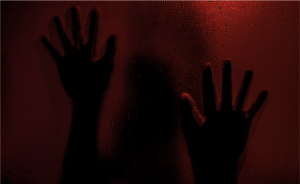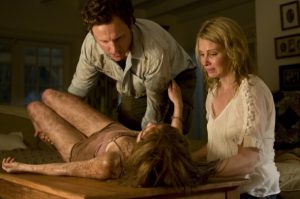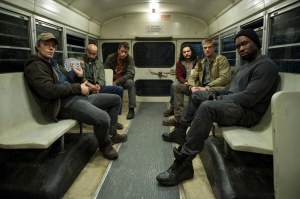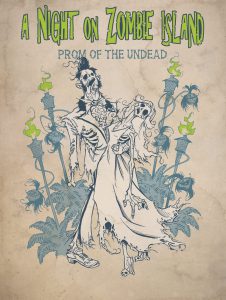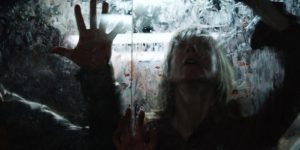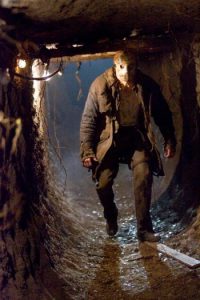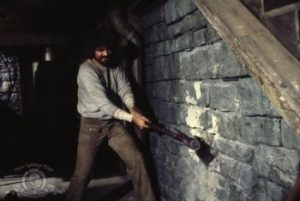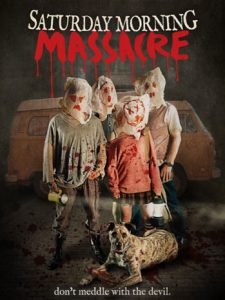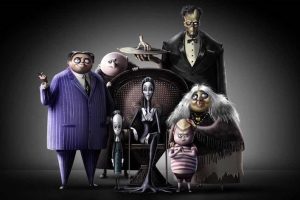Video Nasties: Shogun Assassin
In this series I’m taking a look back at the films that, in the early 1980′s, were caught up in the Video Nasties moral panic in the UK. When video first arrived in the UK it was not covered by our censorship laws, and that, combined with the reluctance of the studios to embrace the technology, meant that many of the early releases were lurid, uncensored, horror films.
The tabloid press mounted a campaign against the films, and with a new right wing government in power and the growing influence of pro-censorship campaigner Mary Whitehouse, the Director of Public Prosecutions was instructed to draw up a list of films liable to prosecution under the Obscene Publications Act. I’ll be looking at every one of the 74 films that made this list, giving you a snapshot of the controversy around each film before watching and reviewing it.
The Ban
Shogun Assassin is one of a handful of films whose status as a video nasty is up for some debate (another is Cain’s Cutthroats, which I’ve not yet decided whether to review, Xtro and Werewolf Woman also appeared only on certain regional lists, making their status as nasties uncertain). The BBFC cut the film by just two seconds for its 1981 cinema release, and it seems to have been this version that Vipco – one of the more famous companies of the nasties era – released on video. Copies were seized, and the film was prosecuted for obscenity, but the prosecution failed and Shogun Assassin seems to have been quietly dropped from the nasties lists that it found itself on. However, whether or not it was ever officially banned, the film did drop out of circulation after the nasties panic, and wasn’t re-released until 1992, when the pre-cut cinema version got an 18 with no further cuts.
When James Ferman left the BBFC many of the old nasties began to crawl out of the woodwork and, unlike most in the early 2000’s, Shogun Assassin had easy passage with the board, passing uncut at 18 as part of Vipco’s first wave of (terrible) DVDs.
The Film
Shogun Assassin is exploitation at its absolute purest. This is an American amalgamation of the first two entries in the Japanese Lone Wolf and Cub series. Much of the plot is stripped away from Sword of Vengeance and Baby Cart at the River Styx to leave a simple narrative: after his wife is killed in an attack also meant to fell him, the Shogun’s chief decapitator (which, incidentally, is a much cooler job description than yours) murders the living hell out of the squad of ninjas who did it, before going on the road, with his baby son Daigoro in a weaponised pram, seeking vengeance.
Obviously the film is dubbed, but, as with much of the rest of the film, the way this is done is surprisingly classy. Dialogue is kept to a minimum on screen, and the dub script was written specifically to match the movements of the actors mouths in the original footage – it actually sometimes works better than many pre sync-sound Italian films. Most of the exposition, and much character work, is handled by giving Daigoro a voiceover that wasn’t in the original films, and that is one of the best things in this one. It’s actually really well written, and what sounds like a remarkable vocal performance by a young child is even more remarkable when you discover that Daigoro’s voice is actually that of Sandra Bernhard. Yes. That Sandra Bernhard. Really. Bernhard helps give the film a vulnerable emotional centre with her performance, and lift it out of being just a compilation of remarkably bloody fight scenes.
Not that there’s anything wrong with remarkably bloody fight scenes. Shogun Assassin was clearly well shot by original director Kenji Misumi. The film has a dark and composed visual appearance, and a calm camera and cutting style that allows the many fight scenes to play out excitingly, while allowing the choreography, rather than the camera and editing, to provide the energy. I love the frantic energy of the violence, and then the way everything stops, before the blood sprays out. The best example comes in the climactic fight, when, fighting one of the ‘Masters of Death’ Lone Wolf brings his sword down on his opponent’s head. Everything stops, then the straw hat splits in half, then the head itself, then, finally, a jet of blood shoots up and the guy falls away dead. It’s an exceedingly cool moment, and one that perfectly demonstrates why, violent though it is, Shogun Assassin is utterly inoffensive; it’s almost a cartoon, true brutality only rarely raises its head here, and the violence is made less offensive by its excess, because you can’t really take it seriously, it’s less violence than it is dance.
There are also a few moments of tenderness in Shogun Assassin. One notable sequence has Daigoro attempting to take water from a stream to his injured Father. Twice he tries to transport it in his little hands, but it runs away, then he brings it in his mouth. Another moment has a soaked Lone Wolf stripping a woman he’s just saved from a sinking ship, for a moment this seems like it will become a rape scene, but instead Lone Wolf, Daigoro and the woman keep each other alive with the warmth of their naked bodies (the shot of Daigoro’s hand brushing the woman’s nipple might also have been one that helped land the film in hot water).
On the whole though, Shogun Assassin is designed as wall to wall action, and it’s a thrilling and entertaining flick on those terms, seldom better than in the long sequence which sees Lone Wolf (and Daigoro) fending off attacker after attacker as they walk along one long road. I can’t claim it as the smartest of the nasties, nor the best, but it’s a great entertainment, and essential vieewing for a martial arts movie fan.
8 / 10



